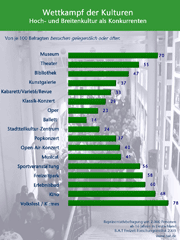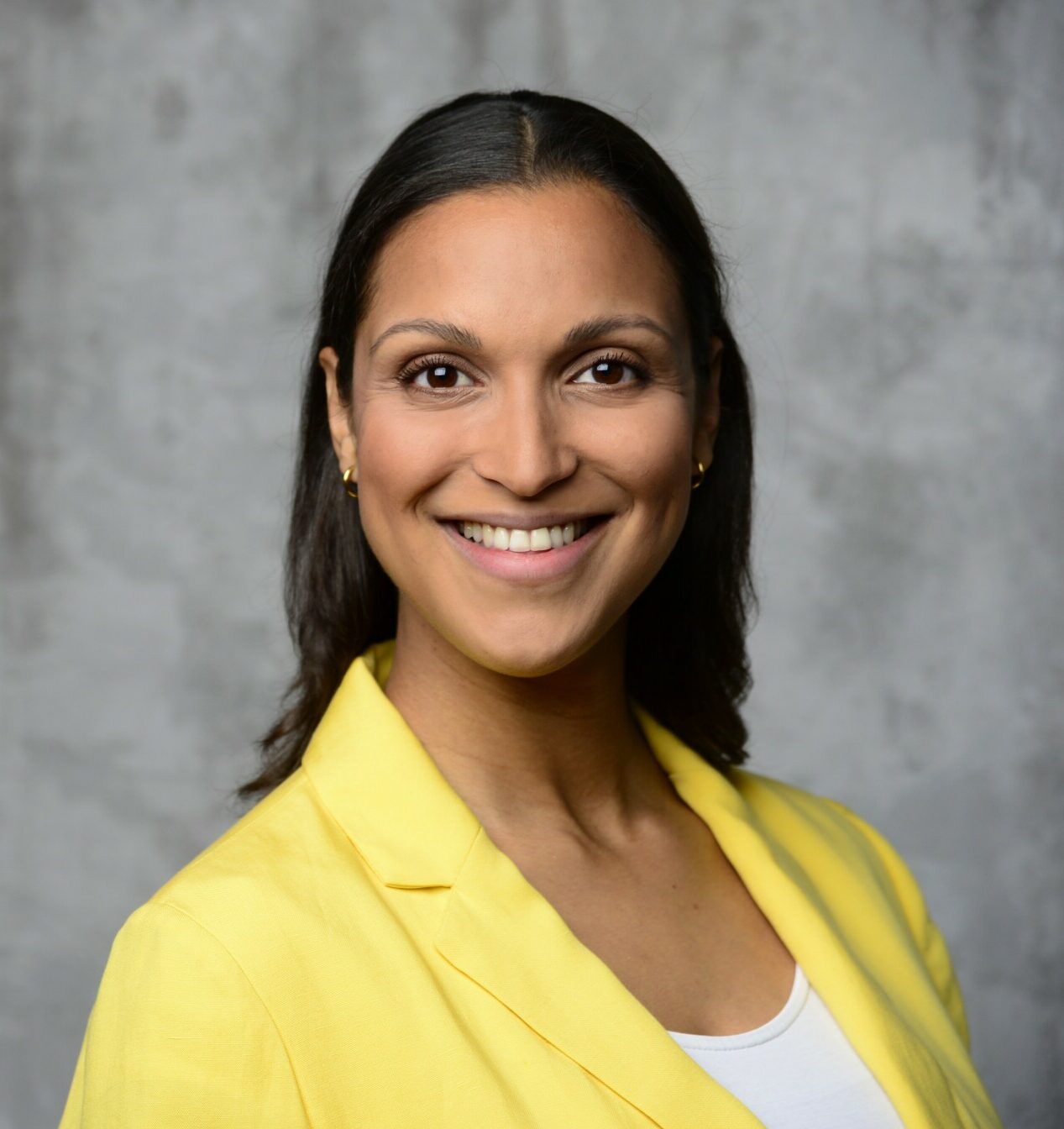Competition of cultures
High and popular culture as competitors
The battle for customers, users, and visitors is intensifying and is even affecting high culture. Public cultural offerings are increasingly feeling the pressure from private providers in the media, sports, and entertainment sectors. Germans prefer going to the cinema (681) to the theater (551), more often to musicals (411) than to the opera (231), and attend open-air concerts (401) more frequently than classical concerts (291). This is according to a recent representative survey conducted by the BAT Leisure Research Institute, in which 2,000 people aged 16 and over were asked which leisure and cultural activities they use "occasionally" or "frequently.".
The end of tranquility: Cultural policy in times of tight budgets
„The days when publicly funded high culture, encompassing opera, ballet, and theater, could rely on a dependable core audience are over,“ says Professor Dr. Horst W. Opaschowski, Academic Director of the BAT Institute. „Cultural policy must therefore become more about cultural marketing and awaken broad public interest in the diversity of cultural offerings.“ Thinking in terms of supply and demand ultimately explains the appeal of mass cultural offerings such as pop concerts (37%), sporting events (56%), or amusement parks (58%). Here, innovative marketing and professional distribution „bring“ these offerings to the people, thereby reaching and attracting a large number of interested parties. These can be live entertainment events, but also creative productions.
Both high culture and popular cultural offerings enhance the quality of life and leisure opportunities in a city or region. Cultural diversity – including that provided by private organizations – contributes to a richer quality of life. Opaschowski: „In times of tight budgets, public cultural institutions can rely less and less on grants and subsidies. They must actively and proactively seek partnerships with businesses and compete for the public's favor. Because it's not just consumers' money that's becoming scarce, but also their time. There are more and more options available than there is time to fully engage with them.“ Therefore, public cultural offerings must increasingly be driven by the audience and their needs and interests. Otherwise, people will vote with their feet, and visitors will migrate to other areas.
In public funding of cultural offerings, the boundaries between high culture and popular culture should become more fluid. Both complement each other and are not mutually exclusive. Opaschowski: "Anyone who wants to ensure the future viability of culture and the arts must perform a balancing act: creating special programs for today's dominant audience, especially the growing number of young seniors, while simultaneously nurturing the audiences of tomorrow. Those who cut corners here are certainly investing in the future of culture."„
Culture reaches almost exclusively the highly educated.
The cultural divide in society
The cultural public remains divided. A significant gap persists between those with higher levels of education and those from less privileged backgrounds when it comes to using public cultural offerings. Clearly, cultural policy can no longer compensate for shortcomings in education policy. Only slightly less than a third of secondary school graduates (32%) use a library occasionally or regularly. The proportion of library users among those with higher levels of education is almost twice as high (59%).
In all areas of culture – high culture as well as popular culture – those with higher levels of education dominate: They are more likely to attend the theater (+15 percentage points), concerts (+12), operas (+8), ballets (+5), and museums (+23). Even at pop concerts (+24 percentage points) or cinemas (+27), visitors with higher levels of education are significantly overrepresented. Opa-schowski: „The cultural audience remains largely comprised of high school graduates. The principle still holds true: education shapes culture. Even price reductions or free admission cannot compensate for the necessary gaps in education.“
If cultural policy is to fulfill its claim of "culture for all," it must create more cultural attractions for everyone and overcome its reservations about mass cultural offerings in the areas of entertainment, information, or edutainment. Event culture is also culture. And cultural tourist attractions represent a vital element of urban culture. A broad public discussion about the basic cultural provision to which all citizens are entitled is still lacking in Germany.



